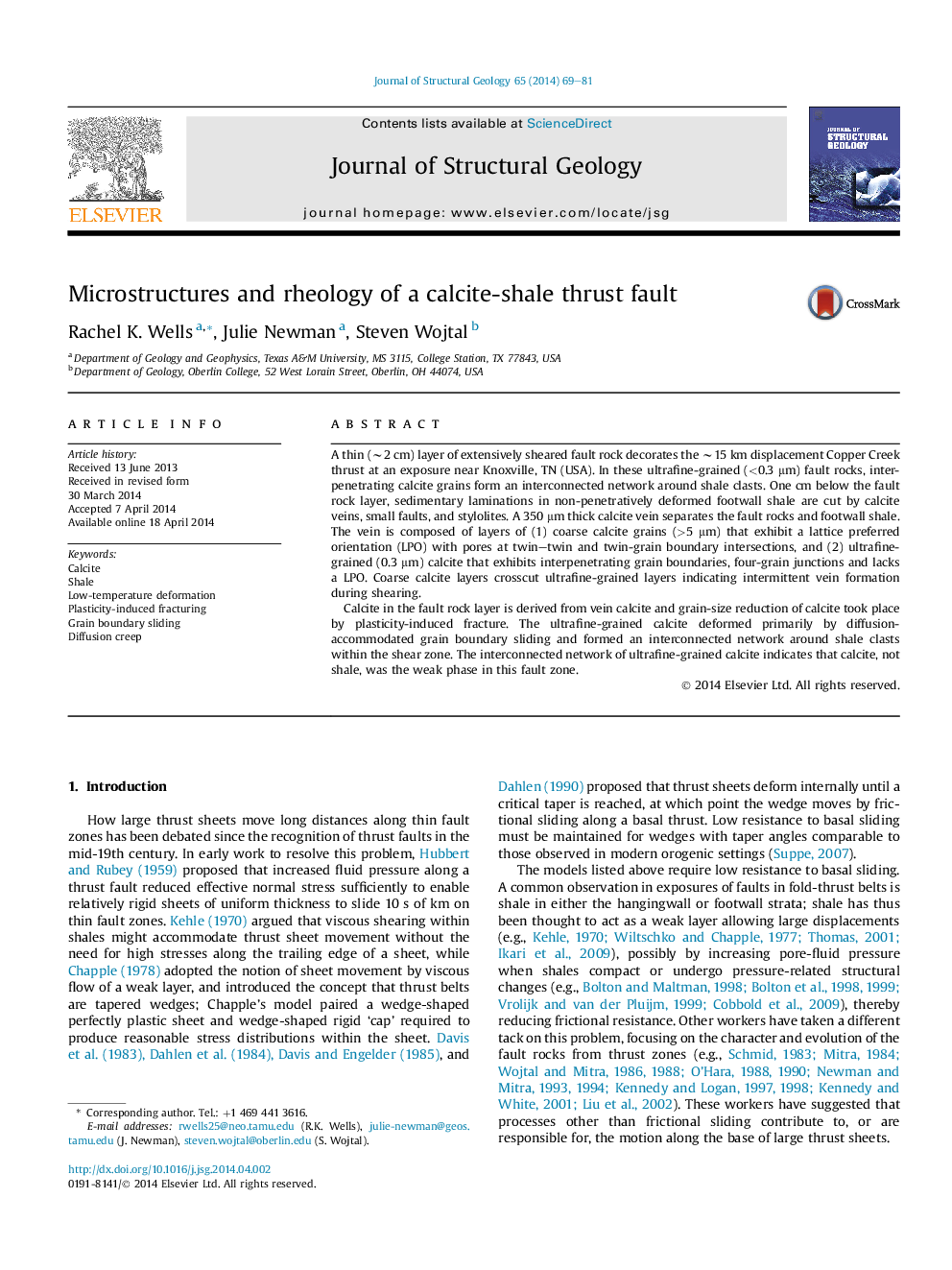| کد مقاله | کد نشریه | سال انتشار | مقاله انگلیسی | نسخه تمام متن |
|---|---|---|---|---|
| 4733093 | 1640512 | 2014 | 13 صفحه PDF | دانلود رایگان |
• Calcite-filled veins may control fault zone rheology.
• Calcite can be weaker than shale along foreland thrust faults.
• Coarse-grained calcite primarily deformed by plasticity-induced fracturing.
• Ultrafine-grained calcite deformed by diffusion-accommodated grain boundary sliding.
A thin (∼2 cm) layer of extensively sheared fault rock decorates the ∼15 km displacement Copper Creek thrust at an exposure near Knoxville, TN (USA). In these ultrafine-grained (<0.3 μm) fault rocks, interpenetrating calcite grains form an interconnected network around shale clasts. One cm below the fault rock layer, sedimentary laminations in non-penetratively deformed footwall shale are cut by calcite veins, small faults, and stylolites. A 350 μm thick calcite vein separates the fault rocks and footwall shale. The vein is composed of layers of (1) coarse calcite grains (>5 μm) that exhibit a lattice preferred orientation (LPO) with pores at twin–twin and twin-grain boundary intersections, and (2) ultrafine-grained (0.3 μm) calcite that exhibits interpenetrating grain boundaries, four-grain junctions and lacks a LPO. Coarse calcite layers crosscut ultrafine-grained layers indicating intermittent vein formation during shearing.Calcite in the fault rock layer is derived from vein calcite and grain-size reduction of calcite took place by plasticity-induced fracture. The ultrafine-grained calcite deformed primarily by diffusion-accommodated grain boundary sliding and formed an interconnected network around shale clasts within the shear zone. The interconnected network of ultrafine-grained calcite indicates that calcite, not shale, was the weak phase in this fault zone.
Journal: Journal of Structural Geology - Volume 65, August 2014, Pages 69–81
